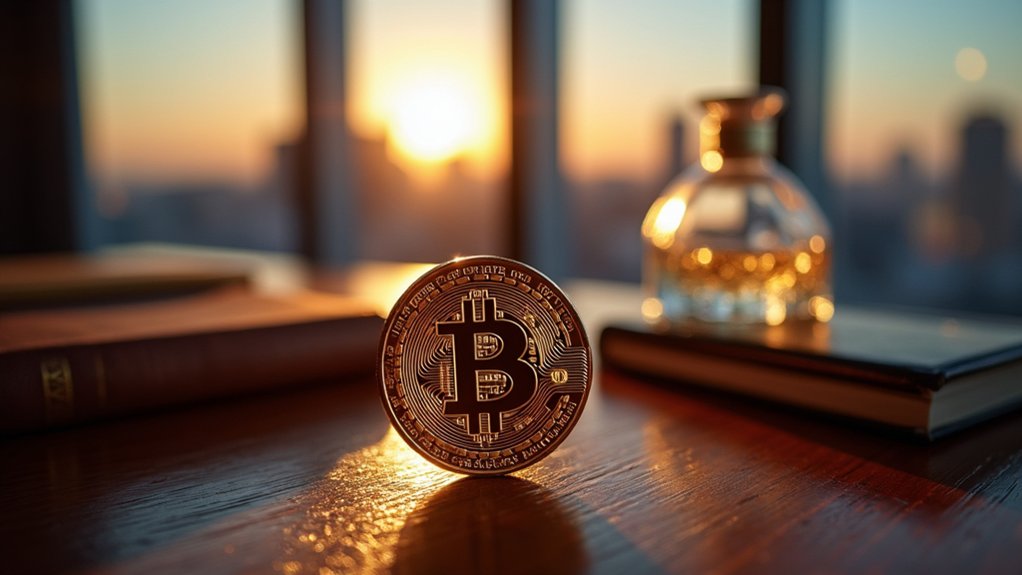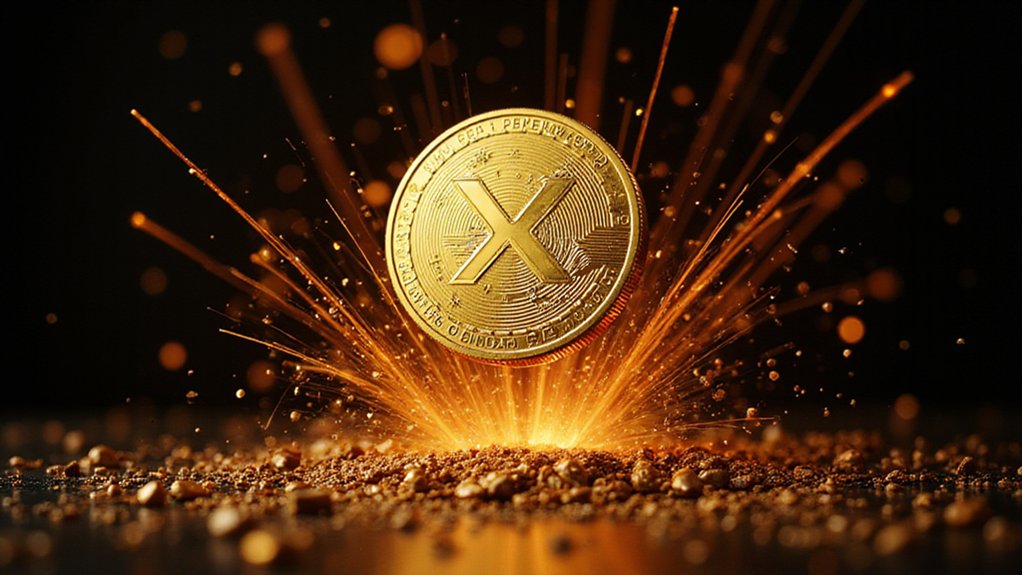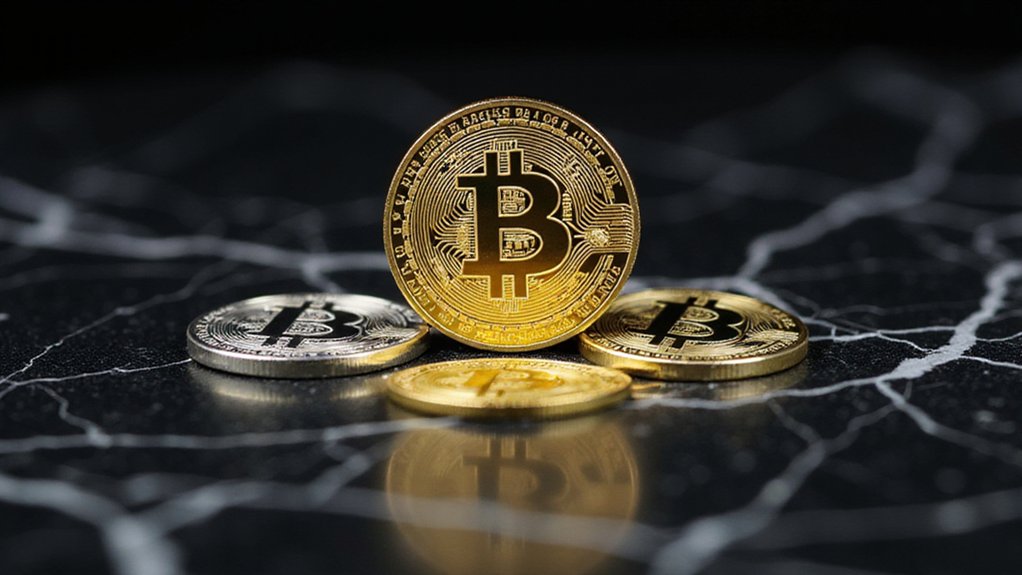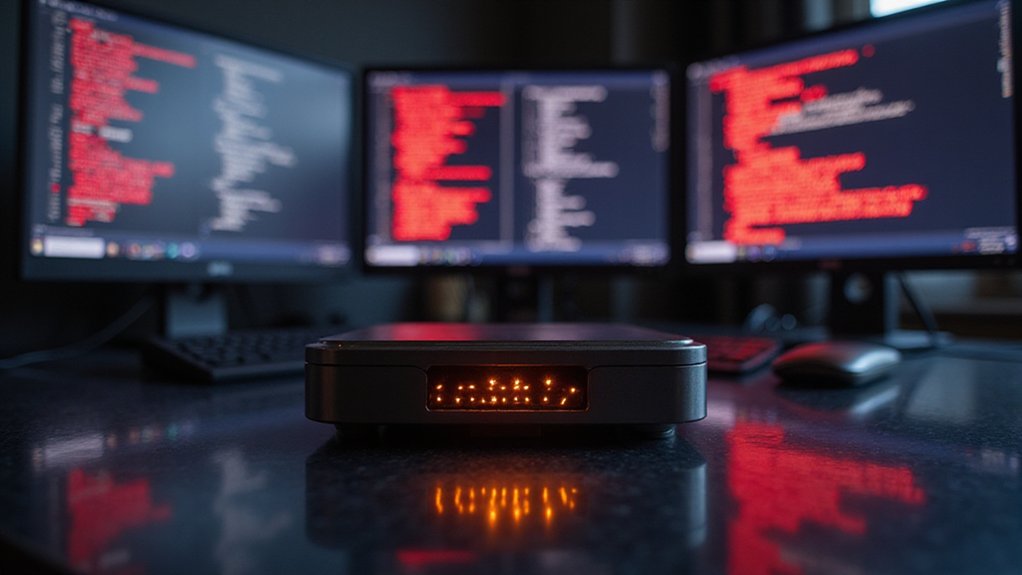How rarefied has Bitcoin ownership become in 2025? Consider this stark arithmetic: only 0.18% of cryptocurrency owners—fewer than two in every thousand—possess at least one complete Bitcoin. This digital scarcity reflects not merely Bitcoin’s protocol-enforced cap of 21 million coins, but the brutal mathematics of distribution in a system where 1.86% of addresses control 90% of the total supply.
The numbers reveal an ecosystem of fragments rather than whole units. The average Bitcoin owner holds approximately 0.57 BTC, while individual wallets contain roughly 0.36 BTC—testament to a reality where most participants collect digital crumbs rather than complete coins.
Most Bitcoin participants survive on digital fragments, collecting fractional crumbs while complete coins slip beyond reach of ordinary ownership.
With over 19.8 million Bitcoins already mined from the finite 21 million supply, the remaining 1.2 million coins face an increasingly crowded field of aspirants.
Institutional appetite has transformed the competitive landscape entirely. MicroStrategy’s treasury holds 580,250 BTC, while exchange giants like Binance warehouse 248,598 BTC in cold storage—single entities commanding more Bitcoin than entire nations.
The United States government’s 207,189 BTC sovereign reserve underscores how institutional accumulation has fundamentally altered the ownership paradigm. Daily ETF inflows, exemplified by the $217 million pulled into US-based funds in a single July day, demonstrate persistent institutional demand that individual retail investors cannot match.
Geographic distribution adds another layer of complexity. While roughly 320 million people worldwide (approximately 4% of global population) own Bitcoin across 200 million wallets, concentration remains extreme. The median age of U.S. cryptocurrency owners at 45 years demonstrates how Bitcoin ownership skews toward more established demographics with greater financial resources.
Vietnam leads national adoption at 21%, yet even widespread global interest cannot overcome the mathematical reality: the four richest addresses collectively own 14% of all existing Bitcoin. The security risks compound this scarcity, as losing private keys results in permanent inaccessibility of cryptocurrency with no central authority to restore access.
The emergence of mid-tier wallets suggests gradual democratization, but the fundamental scarcity persists. Lost coins from inaccessible wallets further constrain circulating supply, creating a deflationary pressure that makes whole-coin ownership increasingly exceptional.
In this scenario, possessing one complete Bitcoin represents membership in an exclusive digital aristocracy—a mathematical rarity in an asset designed for decentralization but dominated by concentration.









